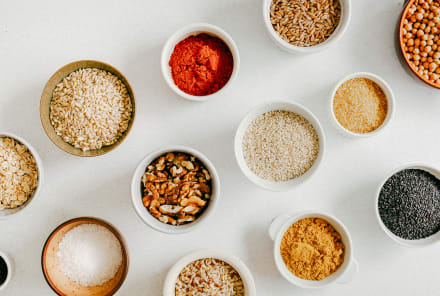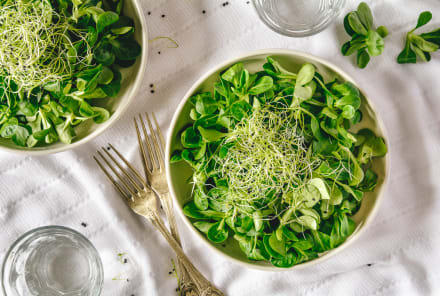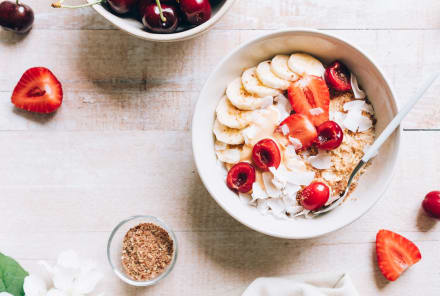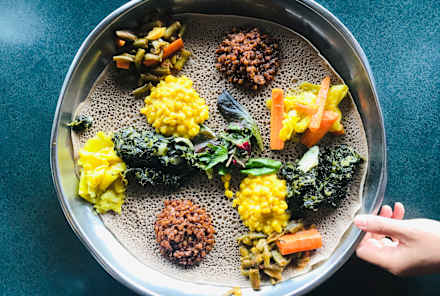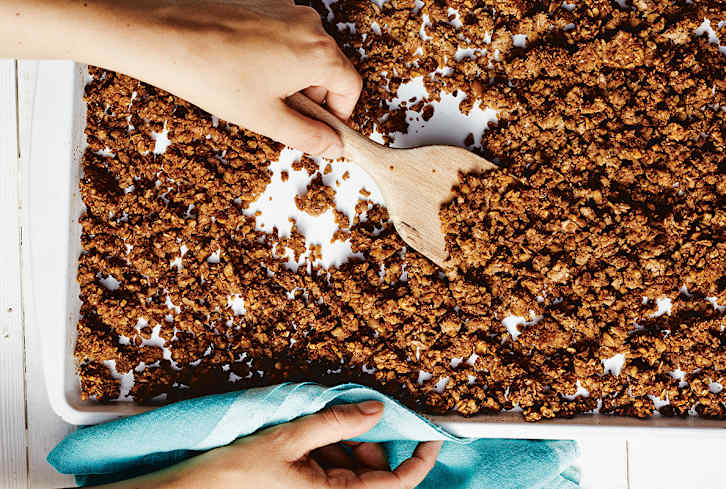Advertisement
What Is Resistant Starch & How Can You Add It To Your Diet?


In a world of low-carb love, starchy foods often get a bad rap. But just like carbs aren't the enemy, starch isn't all bad, either—in fact, some can be truly beneficial to your health. Nutritionists have plenty of insight on all things resistant starches, including the benefits, types, and how to get more in your diet.
What is resistant starch?
Resistant starch is a type of carbohydrate that travels through the small intestine without fully digesting. By the time resistant starches reach the colon, they ferment and serve as a prebiotic (which feed the good bacteria in your gut), registered dietitian Isabel Smith, R.D., CDN, says.
Resistant starches are often categorized into four groups, based on the source. It's also important to note that one type of food can contain different types of resistant starches. Osteopathic doctor Christine Maren, D.O., breaks them down:
- Type 1: Starch that's trapped in plant cell walls (seeds, grains, legumes).
- Type 2: Starch from high-amylose plants (raw potatoes, green bananas, raw plantains).
- Type 3, also called retrograde starch: Starch becomes more resistant to digestion after the source is cooked, then cooled (potatoes, rice).
- Type 4: Chemically modified starches (specific processed foods).
Resistant starch is the most beneficial to gut health, compared to its counterparts: rapidly digestible starch (RDS) and slowly digestible starch (SDS). RDSes are rapidly digested in the small intestine1, according to research published in Nutrients. This causes the carbohydrates to transform into glucose and often leads to a spike in blood sugar. "These rapid and large increases in blood glucose levels can further lead to cell, tissue, and organ damage," the study says. SDSes take longer to break down than RDSes and tend to have similar benefits of low-glycemic foods2, like prolonged energy. Both alternative types of starch are absorbed much more quickly than resistant starch and therefore don't offer the same health benefits.
Is resistant starch good for you?
As a prebiotic food, resistant starches help promote a healthy gut and may aid in digestion3. They do this by feeding the good bacteria (probiotics) already existing in the gut microbiome. This is why it's important to have a healthy combination of prebiotics and probiotics.
"Despite the concern for carbohydrates spiking blood sugar, numerous studies on resistant starch show the opposite effect," Maren says. "The decrease in obesity associated with consumption of resistant starch is significant enough to improve insulin sensitivity4."
Resistant starches have also been shown to help manage weight, as well as metabolic and cardiovascular diseases5.
How to add more resistant starch to your diet.
To add more resistant starch to your diet, you can buy foods that are already resistant to digestion—this would be anything in the type 1 or type 2 categories (seeds, legumes, grains, potatoes, green bananas, raw plantains).
You can also prepare your food in a specific way to bring out their resistant starches. Some foods lose resistant starch with heat (think oats, green bananas, and plantains), while others increase once they've been cooked and cooled. For the latter, "it's OK to reheat them to eat and still retain [the resistant starch]; it's the cooking then cooling that allows this phenomenon," says Smith.
Supplementing your diet with raw potato starch is another simple way to increase your intake of resistant starches. Although, Maren recommends focusing primarily on adding whole foods to your diet. "Bob's Red Mill Unmodified Potato Starch (not flour) can be added to smoothies or even stirred into sparkling water," she says.
What foods are high in resistant starch?
If you're seeking a top-notch source of resistant starch, look no further than these nutritious foods:
Plantains
Plantains may look like bananas, but they are a starchier, less sweet version. In fact, they can be similar to potatoes in flavor, which is why plantains are commonly made into savory chips. Plantains are high in amylose, making them resistant to digestion.
Green bananas
Green bananas6 are a good source of fiber; vitamins C, A and B6; as well as minerals, like potassium, phosphorus, magnesium, and zinc. They're also higher in resistant starches than ripe bananas. Since unripe bananas may be difficult to eat raw, consider freezing them for use in smoothies.
Legumes
Beans, peas, and lentils are all a good source of fiber and resistant starch, making them beneficial for digestion. In this case, their resistant starch levels increase when cooked, then cooled.
Potatoes
White potatoes and sweet potatoes also contain resistant starches when cooked, then cooled. "If you don't want to eat them cold, this type of resistant starch will withstand gentle reheating as long as you keep the heat low," Maren says. Otherwise, you can toss them into fresh green salads or cold potato salads.
Rice
Rice also falls under the third type of resistant starch because when cooled for at least 24 hours it causes starch retrogradation and increases starch content7.
Bottom line.
While starches and carbs may have a bad reputation, they can be an important part of a healthy diet. Aiming for starches that resist digestion can have positive impacts on the gut microbiome, and, thankfully, these foods are pretty easy to find.
7 Sources
- https://www.ncbi.nlm.nih.gov/pmc/articles/PMC3257742/#B16-nutrients-03-00341
- https://pubmed.ncbi.nlm.nih.gov/24915311/
- https://pubmed.ncbi.nlm.nih.gov/12088511/
- https://www.ncbi.nlm.nih.gov/pmc/articles/PMC4220782/
- https://pubmed.ncbi.nlm.nih.gov/24228189/
- https://www.ncbi.nlm.nih.gov/pmc/articles/PMC6627159/
- https://pubmed.ncbi.nlm.nih.gov/26693746/

Why Nutrition Is Key To Changing Your Relationship With Alcohol
Brooke Scheller, DCN, CNS

Why Alcohol Sabotages Your Gut Health & How To Get Back On Track
Brooke Scheller, DCN, CNS

Why Nutrition Is Key To Changing Your Relationship With Alcohol
Brooke Scheller, DCN, CNS

Why Alcohol Sabotages Your Gut Health & How To Get Back On Track
Brooke Scheller, DCN, CNS

Why Nutrition Is Key To Changing Your Relationship With Alcohol
Brooke Scheller, DCN, CNS

Why Alcohol Sabotages Your Gut Health & How To Get Back On Track
Brooke Scheller, DCN, CNS

Why Nutrition Is Key To Changing Your Relationship With Alcohol
Brooke Scheller, DCN, CNS

Why Alcohol Sabotages Your Gut Health & How To Get Back On Track
Brooke Scheller, DCN, CNS

